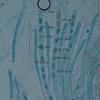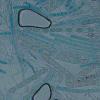
10-03-2015 08:40
Ascospores 8-9,5 * 13-18 µm in diameter.Fuond wit

08-03-2015 16:33
Chris JohnsonBonjourThis perithecium was found on Rabbit (Oryct

09-03-2015 14:39
diameter 3-4 mmasci 156-182spores 20-24,5 x 12-13,

09-03-2015 10:44
 Blasco Rafael
Blasco Rafael
Hola, esta otra muestra es sobre Corylus a unos 12

03-03-2015 21:06
Hi to all I need again your help with this fungus

15-04-2014 02:06
Nick AplinSalut à tous, I wonder if anyone can help me wit
A rare Ascomycete.. Any idea ????
UZUN Yasin,
10-03-2015 08:40
Fuond with Cupressus sp. dead branches in a cemetary...
Gilbert MOYNE,
10-03-2015 08:52
Re : A rare Ascomycete.. Any idea ????
On dirait qu'il y a des poils ?
Gilbert
Gilbert
Jan Gaisler,
10-03-2015 09:16
Re : A rare Ascomycete.. Any idea ????
Humaria aurantia? This is my idea only. Jan
Gernot Friebes,
10-03-2015 09:32
Re : A rare Ascomycete.. Any idea ????
Possibly Strobiloscypha cupressina.
See here:
http://www.researchgate.net/profile/Branislav_Peric/publication/270161572_THE_GENUS_STROBILOSCYPHA_A_NEW_SPECIES_AND_AN_UNRESOLVED_PHYLOGENETIC_PLACEMENT/links/54a1c3850cf267bdb902c67e.pdf
Best wishes,
Gernot
See here:
http://www.researchgate.net/profile/Branislav_Peric/publication/270161572_THE_GENUS_STROBILOSCYPHA_A_NEW_SPECIES_AND_AN_UNRESOLVED_PHYLOGENETIC_PLACEMENT/links/54a1c3850cf267bdb902c67e.pdf
Best wishes,
Gernot
Gilbert MOYNE,
10-03-2015 09:47
Re : A rare Ascomycete.. Any idea ????
Dans Strobyloscypha cupressina, les spores ne semblent pas avoir une grosse goutte centrale.
Je serais curieux de voir les poils.
Gilbert
Je serais curieux de voir les poils.
Gilbert
Gilbert MOYNE,
10-03-2015 09:52
Re : A rare Ascomycete.. Any idea ????
Et Humaria aurantia me semble bien convenir en effet.
Gilbert
Gilbert
René Dougoud,
10-03-2015 09:58
Re : A rare Ascomycete.. Any idea ????
Je pense à Humaria solsequia
Basionyme= Lachnea solsequia Quél.
= Lachnea hybrida (Sow.) Phil.
= Humaria aurantia (Clements & Clements) Häffner & Benkert
VAN VOOREN, N. & MOYNE, G. (2010) Un taxon rare et méconnu, Humaria solsequia (Quel.) comb. nov. (Pezizales) nom correct de H. aurantia. Bull. mycol. Dauphiné-Savoie 197: 43-49.
Cordialement
René
Basionyme= Lachnea solsequia Quél.
= Lachnea hybrida (Sow.) Phil.
= Humaria aurantia (Clements & Clements) Häffner & Benkert
VAN VOOREN, N. & MOYNE, G. (2010) Un taxon rare et méconnu, Humaria solsequia (Quel.) comb. nov. (Pezizales) nom correct de H. aurantia. Bull. mycol. Dauphiné-Savoie 197: 43-49.
Cordialement
René
Gernot Friebes,
10-03-2015 10:03
Re : A rare Ascomycete.. Any idea ????
Hi Gilbert,
yes, you are right about the oil drops. I'm withdrawing my suggestion...
Best wishes,
Gernot
yes, you are right about the oil drops. I'm withdrawing my suggestion...
Best wishes,
Gernot
Gilbert MOYNE,
10-03-2015 10:51
Re : A rare Ascomycete.. Any idea ????
Salut René,
Ce qui me gêne dans H. solsequia, c'est encore une histoire de petites gouttes...
Si je me souviens bien, il y a généralement deux gouttes chez solsequia et macroscopiquement, elle est plus orange et plus profonde, un peu comme H. hemisphaerica.
Ce qui me gêne dans H. solsequia, c'est encore une histoire de petites gouttes...
Si je me souviens bien, il y a généralement deux gouttes chez solsequia et macroscopiquement, elle est plus orange et plus profonde, un peu comme H. hemisphaerica.




 03113218-0001.JPG
03113218-0001.JPG